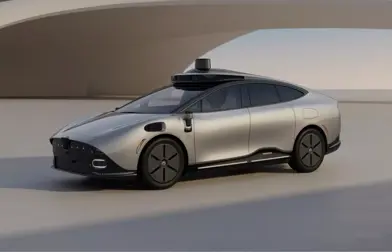It seemed to be the perfect plan — entering the double-cab ute game with a high spec, luxury equivalent at a time when the market was spending lots of money in the game. Add to the equation that Volkswagen had already played the game to healthy effect, and Mercdes-Benz's decision to make the X-Class seems a sound one.
Yet, as has been widely publicized, the X-Class has struggled globally to get ute buyers to part with their cash. Rumours of its abrupt culling from the Mercedes line-up started swirling last April after German press reported the firm was looking to exit its alliance with Renault and Nissan. Speculation only grew when reports came out in August that the model was going to be cut altogether.
Now, it's been formally confirmed that production of the X-Class ute will cease in May after just two years on the market.
"It has been decided that from the end of May 2020, we will no longer produce this relatively young model," Mercedes-Benz said in an overseas statement. "In our global product portfolio, the X-Class is a niche product which plays a great role in a few markets, including Australia and South Africa."
The typical first port of call in instances like these is to blame high prices. Others certainly have, including the Automotive New Europe report that got the rumour mill going. “Right from the start, the X class was unable to live up to expectations,” it said. “Its price, starting at 37,294 euros in Germany, was too high. Competition is fierce in its segment, in which VW Amarok and Ford Ranger also compete.”
“Only 16,700 units of the X class were sold last year in Europe, Australia and South Africa. The U.S., where demand is mainly for full-size pickups, was ruled out as a market.”
Less than 20,000 sales across those key core markets is damning. To put those figures into perspective, in the same year (2018), Ford sold over 9,000 Rangers in wee little New Zealand alone according to local registration data.
Read more: Mercedes-Benz X-Class ute in a class of its own?
The X-Class's relatively high cost of entry was down to a few things. Obviously, having a Mercedes-Benz badge pinned to the front probably contributed — as did, yes, all the improvements the brand made to the X-Class' humble underpinnings and interior layout. The brand also incorporated a powerful V6 for its top-spec models for added performance to rival the Volkswagen Amarok V6.
Being solely produced in Spain also wouldn't have helped the X-Class' prospects. Spain's position as the eighth biggest producer of cars in the world is impressive considering its small size, but there's a reason why over 50 per cent of the world's one-tonne truck market is built in Thailand; it's cheaper. And that'll continue to hold true even with upcoming changes to the Asian nation's minimum wage.
In the end, perhaps the biggest barrier blocking the X-Class from success is perception. Many of today's ute buyers are yesterday's Commodore and Falcon buyers. They're divided along tribal brand lines, they're sticklers for 'Top Trumps'-style truck-to-truck performance comparisons, and they like a bargain. The mob that quickly rejected the (largely excellent) Holden ZB Commodore for 'not being a real Commodore' are the same mob singing the same tune about the X-Class.
Locally, the X-Class' struggle means bargains. A cursory glance at online car classifieds has revealed enormous discounts of up to $20,000 on some models. We found a mid-spec delivery kilometres X250 Progressive 4MATIC, for example, priced at less than $45,000 — some $15,000 less than sticker (and almost $10,000 less than X220 sticker). X350 V6 4MATICs, meanwhile, are available in the ballpark of $70,000 (well under the $88,325 retail).
The experiment, it seems, is over. Farewell X-Class. There's an alternative reality somewhere where you sold like hot cakes.




